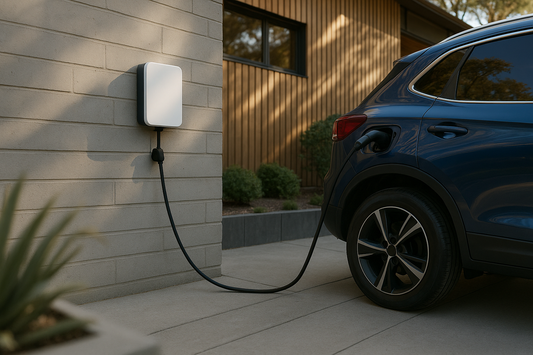During the winter months in Australia, electric vehicle (EV) owners may observe differences in how their cars perform. The cold weather can impact the batterys effectiveness and how the vehicle functions overall. By implementing tactics you can guarantee that your EV operates smoothly during this time of year.
Challenges for EVs in Winter
Reduced Battery Efficiency and Range
In conditions the performance and distance covered by lithium ion batteries decrease due to chemical reactions. The batterys electrochemical functions are less effective in temperatures resulting in a drop in efficiency and driving range. For instance, at 0°C a vehicles battery may only operate at around 60 70% of its capacity compared to when it is, at 25°C.

Longer Charging Times
Charging a vehicle in winter may take longer. The batterys decreased chemical activity not impacts its efficiency. Also its capacity to charge rapidly. In terms the charging speed can decrease notably extending the duration required to achieve a charge.

Increased Energy Consumption for Heating
Heating the cabin in winter draws a substantial amount of power from the battery. Unlike internal combustion engines, which use waste heat to warm the cabin, EVs must rely solely on their battery power. This additional energy demand can further reduce your vehicle's range. For example, using the cabin heater extensively can cut the range by up to 30% in freezing temperatures.

Reduced Regenerative Braking Efficiency
Regenerative braking, which helps extend an EV’s range by converting kinetic energy back into stored energy, can be less effective in cold weather. The reduced efficiency of the battery in cold temperatures affects how well the regenerative braking system can function.

Tire Pressure and Traction Issues
In conditions the cold weather may lead to a decrease, in tire pressure impacting how well your vehicle grips the road and its overall safety. Reduced tire pressure can also lower your vehicles performance making it more challenging to navigate through icy roads. For every 10°C decrease, in temperature tires typically lose around 7 kPa of pressure affecting both driving range and maneuverability.

Practical Tips for Maximizing EV Performance in Winter
Preconditioning Your EV
Preconditioning involves warming up your EV’s battery and cabin while the car is still plugged in. This helps maintain a comfortable temperature inside the car without draining the battery on the go. Many EVs allow you to schedule preconditioning via smartphone apps or in-car settings. Preconditioning not only makes the cabin comfortable but also ensures the battery is at an optimal temperature for driving, improving efficiency and range.

Park Smartly
Whenever you can try to park your EV in a garage or a protected area to help keep the battery warmer. If you don't have access, to a garage parking in a spot or shielded from the wind can also be beneficial. Protecting your EV from the elements can help prevent the battery from getting too cold which's important, for preserving its efficiency. In weather even using a thermal blanket to cover the car can have an impact.

Optimized Charging Practices
Use a faster charger at home for faster and more efficient charging. Keep your battery charged above 20% to avoid extended charging times and maintain better performance. Planning your charging stops carefully on longer journeys can also help avoid delays. If possible, charge during the warmer parts of the day to improve charging efficiency.
Efficient Use of Cabin Heating
Instead of using the AC, which consumes a lot of energy, use heated seats and steering wheels to stay warm in the area where is not too cold. These features use significantly less power than the cabin heater. For example, using heated seats can reduce the energy consumption compared to using the full cabin heater. Bundling up in warm clothing can also help reduce the need for high heating settings.

Plan Longer Trips Carefully
Plan for extra charging stops on longer journeys and use your EV’s route planner to find the best charging stations. Budgeting additional time for these stops can make your trip smoother. Many modern EVs have built-in route planning features that can help you find optimal charging stations along your route, taking into account the reduced range in cold weather.

Regular Maintenance Checks
Make sure to clear snow and ice off your car to enhance aerodynamics and save on battery power. Keep an eye, on tire pressure during weather as it can drop, impacting safety and fuel efficiency. Keeping tires properly inflated can help preserve range and boost grip on roads.

Conclusion
By following these suggestions you can make sure that your electric vehicle operates efficiently during the winter season. Adequate planning and wise habits will allow you to reap the advantages of your EV even when the temperatures drop significantly.
If you're, in search of charging options check out the variety of chargers offered by EVsHome. These chargers offer the flexibility and convenience required to ensure your EV stays charged and prepared regardless of the time of year.




